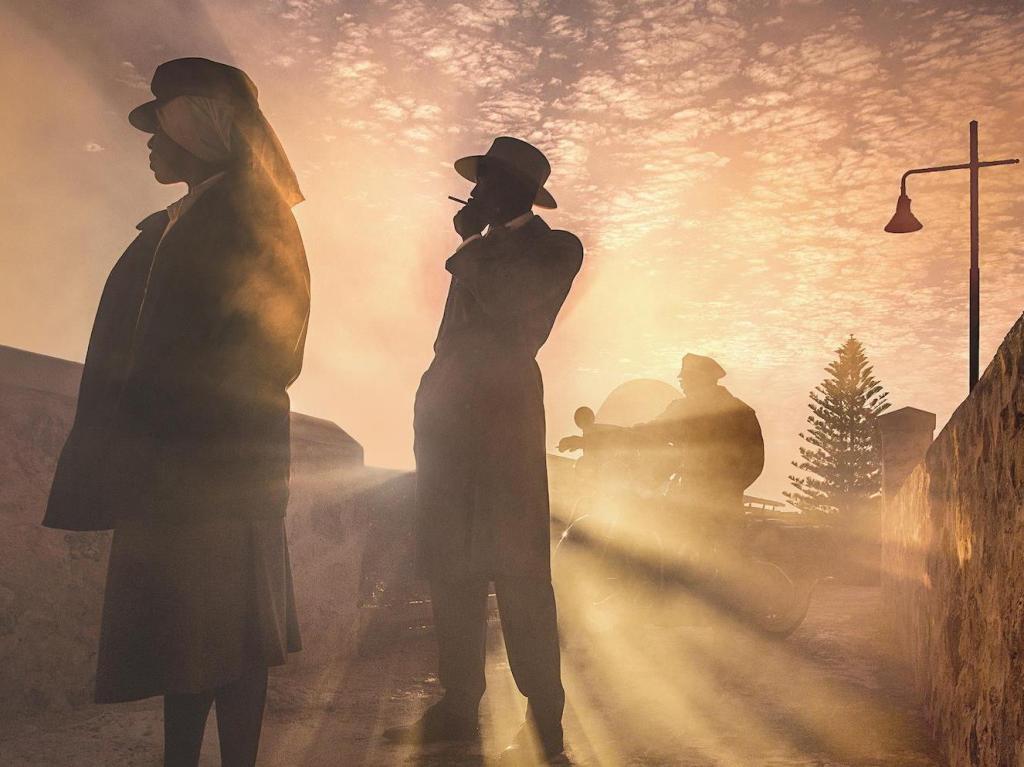Detail of Tracey Moffatt’s Hell, from the series Passage (2017) type C photograph on gloss paper 105.5 × 156 cm; All works are courtesy of the artist and Roslyn Oxley9 Gallery, Sydney and Tyler Rollins Fine Art, New York.
She calls it a ‘photodrama’, her ‘fiction’. Tracey Moffatt’s new work for the 57th Venice Biennale was announced yesterday, just six weeks before it is officially unveiled to the global art world.
Moffatt is the first Indigenous artist to be represented at Venice in a solo presentation since Australia debuted in 1954.
Her work for Venice travels under the title MY HORIZON, which the Moffatt told ArtsHub, ‘is to do with looking out and removing yourself from where you are; it is about retreating into the realm of imagination.’
The exhibition will include two large-scale photographic series and two new video works. They explore journeys – both legal and illegal – and allude to issues of race and gender, sexuality, desire, identity and human connection and estrangement.
‘With my photographs, most of it, all of it is constructed. I am not about capturing; it’s staged. In fact the work in Passage (one of the series) is about old movies,’ she revealed.
Moffatt said that the two photographic series were very different, and that the films had a low budget feel, along the lines of a mock documentary style.
But the artist, and Curator Natalie King, were very “tight lipped” on what would be shown. Only one photograph, Hell, was revealed. It comes from a series of 12 works titled Passage, which is set in a docklands that is ambiguous in location.
Moffatt said she took over a hundred images to find this one, constructed with fog machines and dramatic afternoon light.
King confirmed that Moffatt’s work will only be screened within the new pavilion, and that they have curated the hang to activate that space, and provide an experience for audiences. She would not be pushed further on details.
King said: ‘It has been my role to guard her ideas and her time.’

Tracey Moffatt stands on land occupied by Indigenous leader Bungaree, without directly voicing the wallop of Indigenous stories that will resonate deep within her work MY HORIZON for this year’s Venice Biennale
Indigenous stories blur with international overtones
Moffatt has made the work in part while stationed out at North Head in Sydney, on land that was awarded to the Aboriginal leader Bungaree, who is famed for circumnavigating Australia with Captain Flinders.
Commissioner of this year’s representation Naomi Milgrom explained: ‘Bungaree’s story of dispossession and displacement took place over two centuries ago and as Tracey’s exhibition will powerfully demonstration, dispossession and displacement are still important things today.
‘Tracey’s exhibition is deeply informed by her return to Australia and specifically this historic site. Her perspective is truly global and we are forced to confront some uncomfortable truths about our more recent history,’ Milgrom added.
‘I am not a documentary filmmaker; I am not interested in realism – and if I’m interested in realism it is only to mimic it consciously. In the Venice show I might be drawing on history and fact, but it is a more conceptual, a little more abstract,’ said Moffatt.
King described MY HORIZON as ‘capacious, expansive and personal’.
Key to MY HORIZON is a publication in partnership between the Australia Council and Thames and Hudson, which will also be launched at the Biennale. Hell is the cover image.
But this is no coffee table exhibition catalogue; it takes the notion of narrative in Moffatt’s work and extends that to writers and poets, including an extract from Camille Paglia’s 1992 Penthouse magazine essay on the screen legend Elizabeth Taylor that Moffatt has long loved, and seemingly follows her Moffatt’s thought patterns and impressions – everything from Wagner to the smell of diesel.
The print run is 4,000 books.
One thing that Moffatt is undeniably is charismatic. She flirted with the media: ‘I have never been technically good with cameras – they baffle me.’
She continued: ‘I can’t stand digital now; it is harder to use. I mourn the loss of analogue when you threw the film in and bang-bang-bang and it all looked good. Now we shoot a million images and it is hard to even pick one to work with.
She likened herself to the rock princess Bjork. ‘When she was criticised and smeared for working with Techco as being too cold and having no soul in it, her answer was, “If a musician makes Techno and there’s no soul in it, it is because they didn’t put it in”. That is all the camera is for me – an instrument.’
How Moffatt plays that instrument at this global concert called the Venice Biennale it is still too early to tell.
Tracey Moffatt is represented by Roslyn Oxley9 Gallery, Sydney.
Read: Art Titans wield power over Venice Biennale selection
The 57th Venice Biennale runs from 13 May – 26 November 2017





